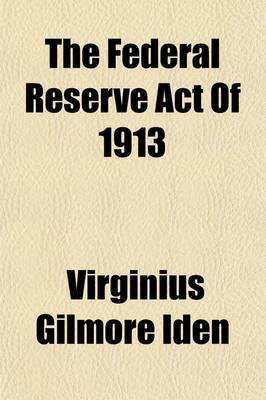The Federal Reserve Act of 1913; History and Digest(English, Paperback, Iden Virginius Gilmore)
Quick Overview
Product Price Comparison
Purchase of this book includes free trial access to www.million-books.com where you can read more than a million books for free. This is an OCR edition with typos. Excerpt from book: 7. Board may regulate discount operations of a reserve bank. Open-market operations. 1. Reserve bank may purchase and sell in open market. (a) Cable transfers. (b) Bankers' acceptances. (c) Bills of exchange. 2. A reserve bank has power (a) To deal in gold coin and bullion. (b) Buy and sell bonds and notes of certain kinds. (c) Purchase and sell bills of exchange. (d) Establish rates of discount. (e) Establish exchange accounts at home and abroad. Government deposits. 1. Secretary of Treasury may deposit public funds with reserve banks, and use reserve banks as fiscal agents. (a) Excepting five per cent, redemption fund. (b) National banks may still be government depositories. Note issues. 1. Board to issue reserve notes to reserve banks. (a) Notes to be obligations of government. (b) Redeemable in gold at Treasury. (c) Redeemable in gold or lawful money at re- serve bank. 2. Reserve banks to receive these notes upon filing notes and bills accepted for rediscount. (a) Board may call upon reserve' bank for addi- tional security. 3. Reserve bank to maintain reserve in gold or lawful money of 35 per cent of deposits. (a) Gold reserve against notes in circulation must be 40 per cent. 4. Reserve bank taxed 10 per cent on notes it is- sues of any other reserve bank. 5. Reserve bank to deposit with Treasury a re- demption fund of at least 5 per cent. 6. Reserve bank may reduce outstanding liabilities ./ by depositing with Treasury.notes, gold, certifi- cates, or lawful money. 7. Reserve agent to hold gold, certificates or law- ful money for exchange for reserve notes. 8. Reserve bank may substitute collateral held by agent. 9. Comptroller to have dies prepared for engraving reserve notes. ...


